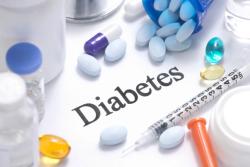
OR WAIT null SECS
Early Blood Pressure Spikes Translate to Increased CVD Risk in Adulthood
A new study is warning a common practice when it comes to recording blood pressure could be ignoring a potential warning sign for risk later in life.
Yuichiro Yano, MD, PhD
Spikes in systolic blood pressure at a young age could serve as a warning sign for developing cardiovascular disease later in life, according to a new study.
Results of the study, which was performed by Duke University’s Department of Family Medicine and Community Health, found a 3.6 mm spike in blood pressure in young adulthood correlated to a 15% greater risk of cardiovascular disease events later in life.
“Current guidelines defining hypertension and assessing the need for anti-hypertensive therapies ignore variability in blood pressure readings,” said lead investigator Yuichiro Yano, MD, PhD, assistant professor in the Department of Family Medicine and Community Health, in a release. “I think there has been a belief that variability is a chance phenomenon, but this research indicates maybe not. Variability matters.” 

To test their hypothesis that averaging blood pressure readings could be masking potential warning signs, Yano and a team of colleagues conducted a prospective cohort study of patients from the CARDIA study from 1985 through 2015. Of the original 5114 CARDIA study participants, 3394 were included in the current analysis.
All patients included underwent 8 follow-up examinations during years 3, 5, 7, 10, 15, 20, 25, and 30. At baseline and year 2, 5, 7, and 10, investigators measured blood pressure 3 times in each participant—the mean of the second and third measurements were used in the investigators’ analysis.
The primary endpoint of the study was a composite of CVD events including fatal and nonfatal coronary heart disease, hospitalization for heart failure, stroke, transient ischemic attack, or intervention for peripheral artery disease. Investigators also examined all-cause mortality as the study’s lone secondary endpoint.
At year 10, the mean age of the 3394 participants included in the study was 35.1 years, 55.7% were women, and 45.9% were African American—the remaining 54.1% were white. Investigates also noted 3% of participants were taking an antihypertensive medication.
During the follow-up period, which lasted a median of 20 years, investigators observed 162 cardiovascular disease events and 181 deaths. Analyses revealed the hazard ratios for every 1 standard deviation increase was 1.25 (95% CI, 0.90-1.74) for mean systolic blood pressure, 1.23 (95% CI, 1.07-1.43) for variability independent of the mean systolic blood pressure and 0.99 (95% CI, 0.81-1.26) for annual change of systolic blood pressure. Furthermore, variability independent of the mean for systolic blood pressure was the only blood pressure pattern in the study found to be associated with all-cause mortality (HR, 1.24; 95% CI, 1.09-1.41).
Based on the results of their analyses, investigators suggest greater visit-to-visits systolic blood pressure variability before the age of 40 was associated with a higher risk of cardiovascular events and all-cause mortality over the following decades.
“If a patient comes in with one reading in December and a significantly lower reading in January, the average might be within the range that would appear normal but is that difference associated with health outcomes in later life?” Yano said. “That’s the question we sought to answer in this study, and it turns out the answer is yes.”
This study, titled “Association of Blood Pressure Patterns in Young Adulthood With Cardiovascular Disease and Mortality in Middle Age,” in JAMA Cardiology.


